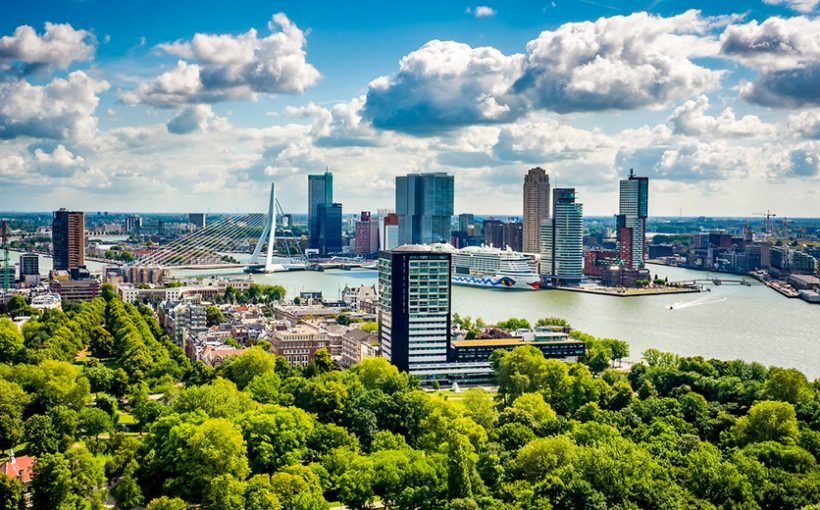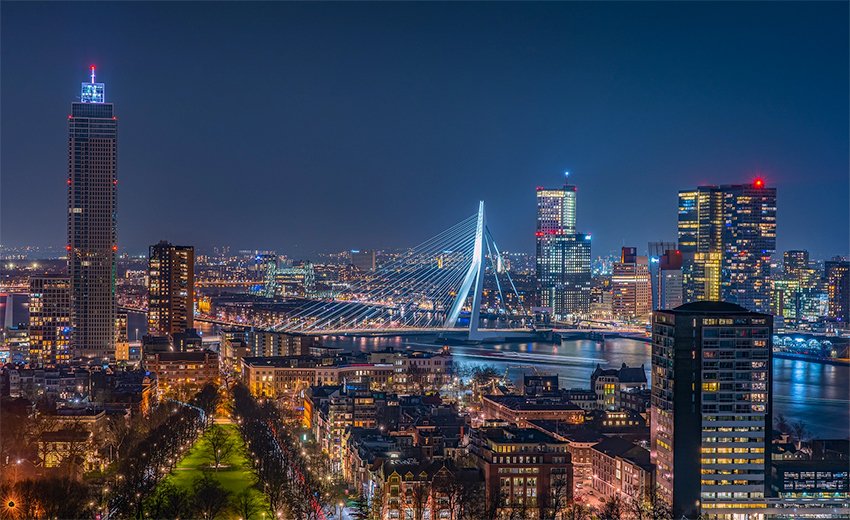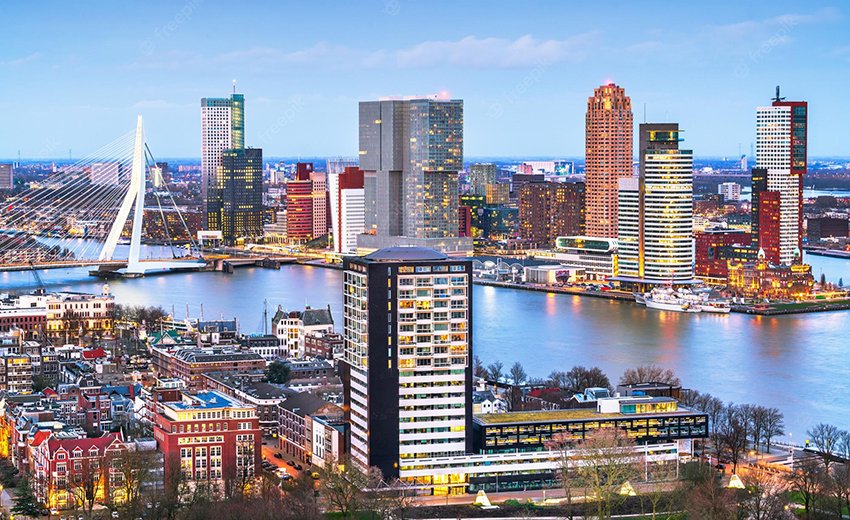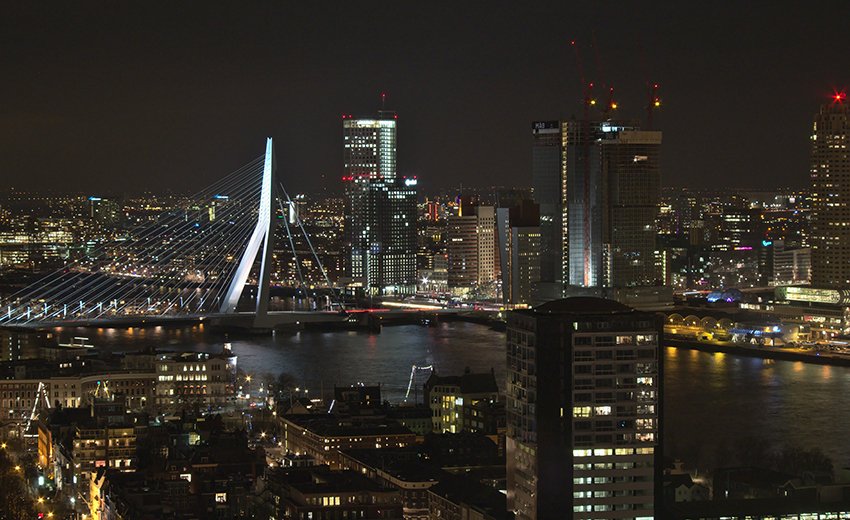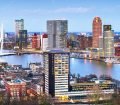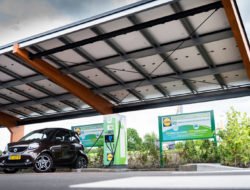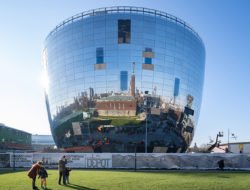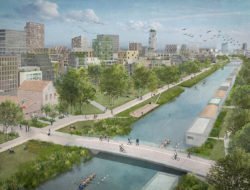High-rise buildings are relatively new in Rotterdam. The first tower of more than 100 metres was not completed until the 1970s, and it was not until 1992 that high-rise tower blocks were built. A look back at the years that changed the skyline of the great Dutch port.
Tower blocks do not always have a good reputation: they’re deemed ugly, too expensive, not environmentally friendly… However, building high is often a logical step, especially in a city surrounded by water, like Rotterdam. The figures speak for themselves: in 2008, 12,000 people lived in the city centre. Today, there are almost 50,000 of them, most of whom live in high-rise buildings.
A history of trial and error
Does this success mean that the evolution has been a smooth sail? No, of course not. Arjen Knoester and Emiel Arends, both urban planners with the Rotterdam City Council, look back over the past three decades to draw lessons and give some advice for the future.
“With its excellent public transport system, modernist city plan and diverse building complexes, Rotterdam was the ideal location for the development of tower blocks. Overall, this has brought a lot to the city centre, but there have also been mistakes. Building skyscrapers in Rotterdam is a story of trial and error. Mistakes from which we were able to draw five lessons“, they analyse.
The 5 commandments of the tower block
- 1. A solid foundation for a harmonious tower
A tower must fit into the city’s skyline. It’s not just a question of height, but also of harmony. Successful skyscrapers contribute to the attractiveness of the city. In order to take root in the city, a tower must have a solid base, as high as the surrounding buildings, on which it is then erected. - 2. No high-rise buildings without a social life
High-rise buildings require sports and leisure spaces and social and community facilities. As urban activist Jane Jacobs has pointed out, a mix of old and new buildings is a solution to enliven a city centre, mixing commercial and social functions. - 3. Respect for the environment
Rotterdam is a port city and is frequently subject to the vagaries of the wind. High-rise buildings provide more shade and bring in more wind. Wind noise standards were only introduced in 2006 with the widespread use of computer-aided design. Models are now in place to measure the environmental impact of new high-rise buildings. - 4. Indispensable community spaces
The media often denounce the perverse effects of living in large housing estates (alienation, solitude, violence, etc.). Arjen Knoester and Emiel Arends are aware of this and stress the importance of creating a sense of community. In order to understand the difficulties faced by the inhabitants, it is important to have solid collaboration between municipal authorities, security forces, urban planners and architects. Courtyards, community houses, shared kitchens or work spaces… are easy ways to strengthen ties. - 5. No large buildings without services and accessibility
The long-term success of such projects requires the proximity of everything that residents need on a daily basis. The immediate presence of supermarkets, nurseries, underground stations, railway stations, etc. means that residents will travel by bike and on foot. The success of high-rise buildings also depends on the quality of their connection with the rest of the city, otherwise, there is a feeling of abandonment and isolation, as is sometimes the case in the French suburbs, for example.
If you build, build well
“Towers are not always the best solution, but if they are chosen, they must be built under optimal conditions“, conclude Knoester and Arends. “Issues such as circularity, climate resilience and new building materials will lead to new thinking about high-rise buildings in the coming years“, the two planners predict. More to follow… and not only in Rotterdam
Tags: #Tower blocks, Netherlands, Rotterdam, urbanism

































